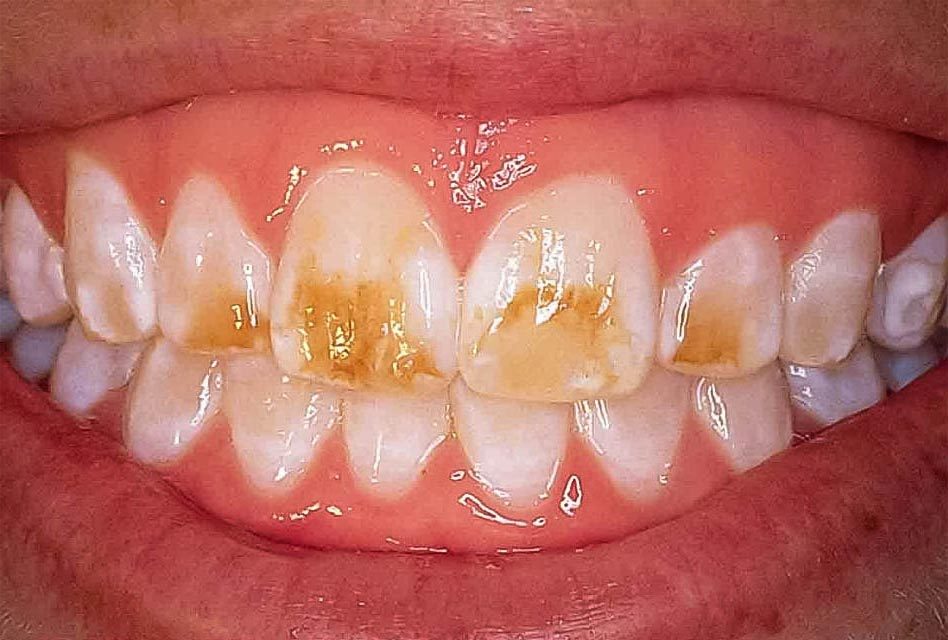Hypocalcification Of Teeth

Hypocalcification of teeth is a dental condition characterized by the undersupply of calcium ions during the formation of tooth enamel, leading to softer and more porous teeth. This condition can affect both primary and permanent teeth, and its severity can vary greatly from one individual to another. Understanding hypocalcification is crucial for dental professionals and patients alike, as it can have significant implications for oral health and the management of teeth.
Causes of Hypocalcification
The causes of hypocalcification can be varied and multifactorial. Some of the primary factors include:
- Genetic predisposition: For some individuals, the tendency to develop hypocalcification may be inherited, suggesting a genetic component to the condition.
- Systemic diseases: Certain systemic conditions, such as celiac disease or gastrointestinal disorders, can affect nutrient absorption, including calcium, leading to hypocalcification.
- Environmental factors: Exposure to certain environmental toxins or inadequate dietary intake of calcium and vitamin D can also contribute to the development of hypocalcified teeth.
- Medications: The use of certain medications during pregnancy or early childhood, such as tetracycline, can interfere with tooth development and lead to hypocalcification.
Clinical Features and Diagnosis
Hypocalcification can manifest in different ways, depending on the severity and the teeth affected. Common clinical features include:
- Tooth discoloration: Teeth may appear more yellow or brown due to the decreased enamel thickness and increased porosity.
- Sensitivity: Hypocalcified teeth are often more sensitive to temperature changes, sweet tastes, and pressure, due to the easier penetration of stimuli through the porous enamel.
- Increased risk of decay: The softer and more porous nature of hypocalcified enamel makes it more susceptible to dental caries.
- Enamel wear: Over time, hypocalcified teeth may show signs of excessive wear, further compromising their structure and function.
Diagnosis is typically made through clinical examination and radiographic evaluation. Dental professionals may use visual-tactile assessments, where the surface of the teeth is inspected for signs of hypomineralization or hypoplasia, and may use a dental explorer or other tools to assess the texture and hardness of the enamel.
Management and Treatment
The management of hypocalcified teeth aims to prevent further deterioration, reduce sensitivity, and ensure the long-term health and function of the teeth. Treatment strategies may include:
- Fluoride therapy: Regular application of fluoride varnishes or gels can help strengthen the enamel and reduce sensitivity.
- Desensitizing treatments: For teeth that are sensitive, desensitizing toothpaste or in-office treatments can provide relief.
- Restorative dentistry: In cases where hypocalcification has led to significant enamel loss or decay, restorations such as fillings, crowns, or veneers may be necessary to protect the tooth and restore function and aesthetics.
- Preventive care: Emphasis on good oral hygiene practices, regular dental check-ups, and a diet that is low in sugars and acids can help prevent further complications.
Prevention
Prevention plays a critical role in reducing the risk of hypocalcification and its complications. This includes:
- Dietary counseling: Ensuring adequate intake of calcium and vitamin D, either through diet or supplements, is crucial for healthy tooth development.
- Regular prenatal care: For pregnant women, regular prenatal check-ups can help identify and manage conditions that might affect fetal development, including tooth formation.
- Avoidance of harmful substances: Limiting exposure to substances known to affect tooth development, such as certain medications or environmental toxins, is important.
Future Trends and Research
Research into hypocalcification of teeth continues to evolve, with a focus on better understanding the genetic and environmental factors that contribute to its development. Advances in dental materials and technologies offer promising solutions for the prevention and treatment of hypocalcified teeth. For instance, the development of more effective fluoride treatments and the use of nano-hydroxyapatite in dental products are areas of ongoing research.
Conclusion
Hypocalcification of teeth presents a significant challenge for dental health, affecting not only the aesthetics but also the functionality and longevity of the teeth. Through a comprehensive approach that includes proper diagnosis, management, and preventive strategies, individuals can mitigate the effects of hypocalcification and maintain good oral health. Continuous research and advancements in dental care are crucial for improving our understanding and treatment of this condition, ultimately leading to better oral health outcomes for affected individuals.
What are the primary causes of hypocalcification of teeth?
+The primary causes of hypocalcification of teeth include genetic predisposition, systemic diseases, environmental factors, and the use of certain medications during critical periods of tooth development.
How is hypocalcification of teeth diagnosed?
+Diagnosis of hypocalcification of teeth is typically made through a combination of clinical examination, where the dentist visually inspects the teeth and may use a dental explorer to assess the enamel’s texture and hardness, and radiographic evaluation to assess the extent of the condition.
What are the management and treatment options for hypocalcified teeth?
+Management and treatment options for hypocalcified teeth include fluoride therapy to strengthen the enamel, desensitizing treatments for sensitive teeth, and restorative dentistry such as fillings or crowns to protect the teeth and restore their function and appearance.
Can hypocalcification of teeth be prevented?
+While some cases of hypocalcification may not be entirely preventable, especially those with a genetic component, preventive measures such as ensuring adequate dietary intake of calcium and vitamin D, avoiding harmful substances, and maintaining good oral hygiene practices can reduce the risk and severity of the condition.
What does the future hold for the treatment of hypocalcification of teeth?
+The future of treating hypocalcification of teeth looks promising, with ongoing research into more effective dental materials and technologies. Advances in fluoride treatments and the use of nano-hydroxyapatite are examples of areas being explored to improve the prevention and management of hypocalcified teeth.
